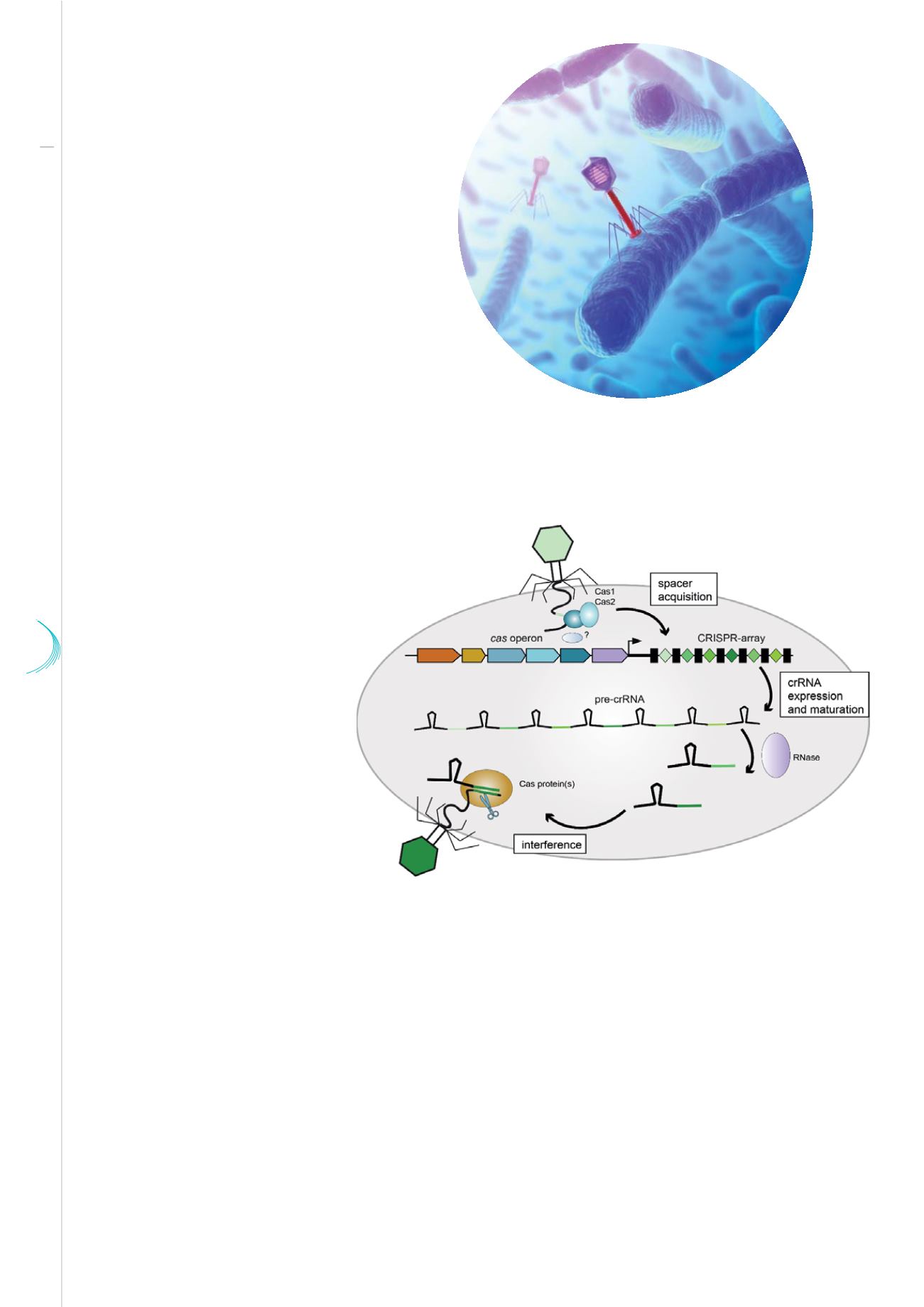

37 38
22
La Lettre
© ktsdesign - Fotolia
The CRISPR/Cas system
Bacteriophage attacking a bacterium
© From Emmanuelle Charpentier, Max Planck Institute for Infection Biology, Berlin
CRISPR = Clustered regularly interspaced short palindromic repeats
Cas = CRISPR-associated
CrRNA : CRISPR targeting RNA
recent years is the discovery that bacteria are able
to immunize themselves against bacteriophages
and possess a very efficient immune system.
When they encounter a virus, most bacteria
may, right after the infection, that is, after
the interaction of the virus with its receptor,
integrate a small part of the viral DNA in
a locus of their genome called CRISPR
(
Clustered Regularly Interspaced Short
Palindromic Repeats
). If these bacteria thereafter
meet the same virus, they recognize it and are able
to destroy it and prevent the infection. This destruction
involves either several proteins, namely Cas (
CRISPR
associated proteins
), or
only one protein, Cas9.
The efficiency of the
CRISPR/Cas9 system is
so impressive that, very
quickly, emerged the idea
to utilize this bacterial
machinery to edit, in a
targeted way, the genomes
of all living organisms. This
was successfully done. The
technique is in the process
of revolutionizing biology,
as it enables genes to be
studied in a targeted way,
either by deleting them or
by modifying them, opening
therapeutic avenues that
have never been explored
before, incidentally raising at the same time important ethical issues.
Bacterial communities
One last aspect of microbiology that has to be considered is the new concept of “sociomicrobiology”.
Rarely does one find a bacterium which lives alone: bacteria live in groups, which can form as soon as
one of them lays on a surface, inert or alive, adheres to it, multiplies, secretes a matrix which eventually


















